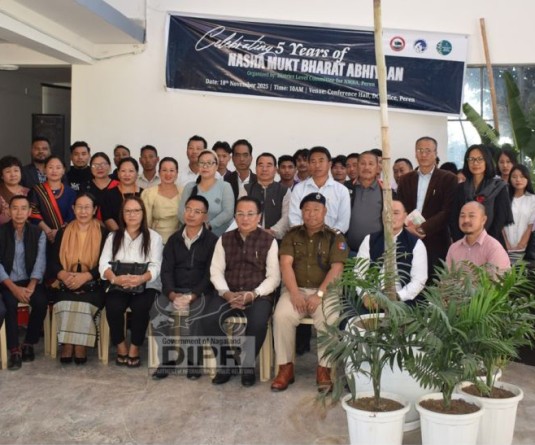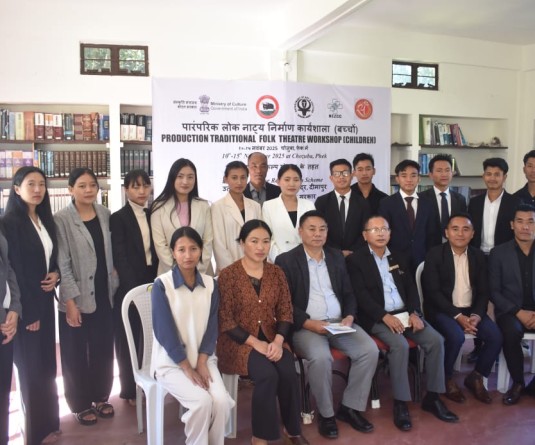
Morung Express News
Dimapur | August 26
That the ‘Kashmir problem’ is both serious and long standing is true, but the ‘Naga problem’ is as intense, and even older, writes Ramachandra Guha, a noted Indian historian and writer in a column for the Hindustan Times.
In a commentary titled ‘Still searching for peace with honour in Nagaland’ which appeared in the Hindustan Times, Guha says the Naga issue began even before Independence and Partition when, in 1946, a group of educated Nagas claimed sovereignty for the areas they lived in.
The journal the educated Nagas published was significantly called The Naga Nation. Once the British left these hills, said the newly-formed Naga National Council (NNC), it should be replaced by ‘a government of the Nagas, for the Nagas, by the Nagas’. During that stage, some members of the NNC wanted full and total sovereignty. Others wanted autonomy within the Indian Union.
The radicals won the argument, and launched an armed struggle for independence, which provoked fierce reprisals from the State, Guha recollects. Through the 1950s the Naga Hills witnessed bitter and bloody battles between insurgents of the NNC and the Indian Army. Hundreds of lives lost, many of civilians unconnected with either rebels or government. Coming to the present, Guha observes that for 20 years now, an uneasy truce has prevailed between the NSCN (IM), and the Government of India. But no resolution has been possible, because “each side insists on seeing itself as blameless.”
While Guha’s commentary trails the Naga political issue in bits and pieces, the main actor that the writer portray in correlation is the “remarkable and still relevant role” played by Late Rishang Keishing, the ‘grand old man of Manipur’ on the question of Nagaland.
Keishing, a Tangkhul Naga, was a member of the first Lok Sabha in 1952 and also went on to serve as an MLA for seven terms apart from having become chief minister of the Manipur four times. He passed away recently on August 22, 2017 aged 97. As Guha recalls, in 1956, the Naga issue was the subject of extended debate in the Lok Sabha, “where the most eloquent interventions came from an MP named Rishang Keishing, a Tangkhul Naga by birth, born and raised in the hills of the erstwhile princely state of Manipur.”
In 1957, Keishing spoke several times in the Lok Sabha in favour of an honourable truce between Naga insurgents and the Indian state. He chastised Prime Minister Nehru for not meeting a delegation of Naga citizens who had recently visited Delhi. And he came down hard on the violence committed by soldiers in uniform.
‘The Army men’, Keishing remarked, ‘have shown an utter disregard for the sentiments of the local Nagas, for, they have tried to terrify them by carrying the naked corpses of the Nagas killed by them…’ At the same time, Guha comments that “Keishing did not spare the rebels either, for they had terrorized villagers who did not support them, while assassinating Naga leaders who did not approve of violence.” Unlike the partisans of either side, Guha writes that Keishing saw clearly that excessive force had been used by both sides.
‘Who can boast of an untarnished record?’ he asked: ‘Who can dare fling the first stone and assert that they are not sinners? I ask this of the hostile Nagas as well as of the Government’. He recommended ‘an immediate declaration of general amnesty’, ‘because the continuation of hostilities means the ruins of innocent citizens’.
However, as Rishang Keishing pointed out, neither the rebels nor the State can boast of an unvarnished record. Neither can fling the first stone. An acknowledgement of mutual responsibility, an admission of one’s own crimes and mistakes, is therefore a precondition for peace with honour in Nagaland — and in Manipur and Kashmir too, Guha observes. Unfortunately, the obituaries, while paying attention to the posts Keishing held and the elections he won, did not mention his remarkable and still relevant interventions on the question of Nagaland, the historian feels.





